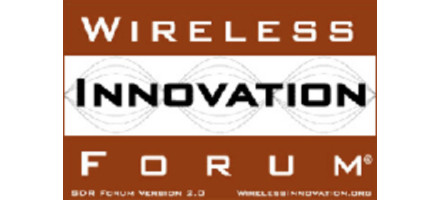Wireless Innovation Forum contributions to SCA 4.1
History
October 09, 2014
The successful implementation of software-defined radios based on Software Communication Architecture version 2.2.2 (SCA 2.2.2) has identified improvements that need to be made to further advance the technology. The Wireless Innovation Forum worked in collaboration with the US Department of Defense’s Joint Tactical Network Center (JTNC) to develop the SCA by producing eight document packages providing six technical recommendations and two specifications for the next version of the SCA.
“The SCA specifications are an important milestone for the standardization of SDR and … a prerequisite for enabling the timely and cost-effective transfer and integration of waveforms, especially multinational and secure waveforms for combined operations,” said Dr. Read also : Northrop Grumman’s SATCOM-Enabled Freedom Radio Advancing JADC2 Connectivity Layer – SatNews. Rüdiger Leschhorn, head of research at radio Communication Department of Rohde & Schwarz, Germany.
The SCA 2.2.2 architecture has achieved significant success in the military communications market1. Hundreds of thousands of SCA-enabled software-defined radios (SDRs) have been deployed to date, and dozens of programs are currently working to deploy more of these types of radios (see lead image). The reasons for this success lie in the benefits brought by adopting SCA: proven cost and time-to-delivery advantages, improved cross-component interoperability, simplified insertion of new communication capabilities into deployed radios, and reduced development risk and time-to-market. The success of SCA to date has led new countries and new organizations to begin exploring its use, driving second generation market adoption of SDR2.
As with any technology, actual use in real-world environments highlighted the improvements to the SCA specification that were necessary to allow further market penetration. Chief among these were improving the architecture’s ability to scale to meet the size, weight, power, and cost requirements of particular radios; finding architecture modifications that can allow radios to start up faster; improving support for devices such as digital signal processors (DSPs) and field programmable gate arrays (FPGAs) that are used in most radio architectures; and improving the ability to migrate legacy waveforms to an SCA model. The need for these improvements has led programs such as the European Program for Secure Software Defined Radio (ESSOR) in Europe to define their own SCA-based SDR architectures3.
A new specification is required
In 2009, the Joint Program Executive Office for the Joint Tactical Radio System (JPEO JTRS) initiated the SCA Next project to provide these improvements. The Wireless Innovation Forum brought the voice of the international community to the collaborative process, providing input from member organizations around the world and from programs such as ESSOR4,5,6,7. The result of these and other efforts was SCA 4.0, which provided improved scalability and better support for lightweight applications by removing the Common Object Request Broker Architecture (CORBA) middleware requirement and defining lightweight and ultra-lightweight processor development environments with limited resources8.
In November 2013, SCA development continued through a workshop organized by the Wireless Innovation Forum’s Coordinating Committee on International SCA Standards (CCSCA) and involving JTNC to further improve the SCA9 specification. Key areas for further improvement defined at this workshop include better backward compatibility with SCA 2.2.2 and further updates to Application Environment Profiles (AEP) and Interface Definition Language (IDL) profiles. A work plan was established, with the Wireless Innovation Forum taking the lead in developing technical solutions in multiple areas.
Technical contributions to SCA 4.1
More than 1,000 hours were volunteered by forum members to develop these solutions. Their efforts resulted in six recommendations10:
- App-backwards compatibility. This advisory provides comments on the modifications to SCA 4.0 required to maintain backward compatibility of applications with SCA 2.2.2.
- Application Mix. This recommendation proposes changes to the next SCA specification that will allow an application to consist of both SCA 2.2.2 and SCA 4.1 components. This change will allow developers to make a more gradual transition from SCA 2.2.2 to SCA 4.
- Naming conventions. This recommendation proposes changes to the SCA 4.0.1 specification to use a naming convention for interface and component names. The aim is to improve the readability of the next edition of the specification.
- Push registration distribution properties. This recommendation proposes changes to the SCA 4.0.1 specification to support late device registration with the domain manager. This change will allow the core framework to better accommodate device components with multiple implementations and manage plug and play devices.
- Scalable components. This recommendation proposes changes to the SCA 4.0.1 specification to improve component scalability by allowing component developers to choose whether or not to implement some of the standard subcomponent interfaces. Scalability will also be used to support the different specification profiles (see Figure 1).
- Scalable Manager Components. This recommendation proposes changes to the SCA 4.0.1 specification to add support for scalability of manager components. This will allow developers to choose whether or not to implement all frontends. Manager scalability will also be used to support the different specification profiles.
Figure 1: Proposed base UML model of the component.
|
|
Volunteer efforts also produced two specifications11. The first is WInnF Lw & ULw AEPs. This specification defines a POSIX AEP for interaction between SDR applications and the operating environment (OE) in resource-constrained architectures. Two groups of functions are defined on the base AEP, Light (Lw) and Ultra-Light (ULw). The documents contain normative content for Base AEP feature groups plus support sections giving SCA-like tables for content overview and detailed rationale for design choices. The specification also provides two functional groups that can extend the Base AEP functional groups as needed for portability, with negligible impact on portability. The specification harmonizes and enhances previous work by JTNC and ESSOR into a converged solution (see Figure 2).
Figure 2: Positioning the AEP specification.
(Click on graphic to enlarge by 1.9x)
|
|
The second specification is the WInnF PIM IDL profiles. This specification defines platform-independent model (PIM) IDL profiles that can be used to define platform-independent APIs of an SDR component. Two PIM IDL profiles are defined: “Full” and “Ultra-light” profile. The document contains normative content for the defined profiles, a support section with tables to review content and expansion prospects, and a rationale section to explain design choices. This specification also harmonizes and enhances previous work by JTNC and ESSOR into a unified solution.
Where to next?
The document packages above have been sent to JTNC for consideration to be included in the SCA 4.1 specification. At the time of writing, the release date of this new specification has not yet been determined, but a draft is expected to be available in late 2014 or early 2015. Meanwhile, a preview event is scheduled for October, to present proposed changes and explore requirements for future updates to SCA12.
Lee Pucker is CEO of The Wireless Innovation Forum, a non-profit “mutual benefit corporation” dedicated to advocating for the innovative use of spectrum and the advancement of radio technologies that support essential or critical communications around the world. Lee is a Certified Association Executive (CAE), Project Management Professional (PMP) and holds a BA from the University of Illinois and an MA from Johns Hopkins University. Readers can find it at [email protected].
Wireless Innovation Forum 604-828-9846 www.wirelessinnovation.org
References
1 http://groups.winnforum.org/d/do/6610
2 http://groups.winnforum.org/d/do/6527
4 http://jtnc.mil/sca/Documents/JPEO-NR-2010-004.pdf
5 http://groups.winnforum.org/d/do/4983
6 http://groups.winnforum.org/d/do/4984
7 http://groups.winnforum.org/d/do/4985
8 http://jtnc.mil/sca/Pages/default.aspx
9 http://groups.winnforum.org/p/cm/ld/fid=403
10 http://groups.winnforum.org/Recommendations
11 http://groups.winnforum.org/Specifications
12 http://www.wirelessinnovation.org/sca-4-1-standard-preview-event






Comments are closed.